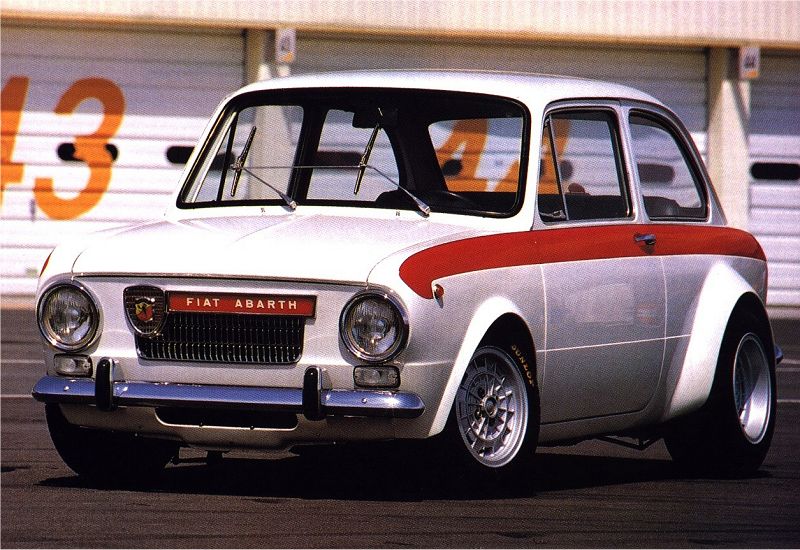Back in 1964, Italian roads witnessed the birth of a machine that would redefine the boundaries between street cars and race cars. The Abarth OT 2000 Berlina Monstra emerged from Turin’s workshops as a testament to Carlo Abarth’s obsession with speed and innovation. Standing just 52 inches tall and weighing a mere 1,786 pounds, this automotive anomaly challenged every convention of its time.
This two-door demon packed nearly two liters of fury under its hood, at a time when most European cars barely crossed the one-liter mark. Its brutal acceleration and 159 mph top speed weren’t just numbers — they were a declaration of war against the status quo of 1960s motorsport.
The Birth of a Monster
Turin’s automotive landscape in 1964 buzzed with activity, but nothing prepared the industry for Abarth’s latest creation. The OT 2000 Berlina Monstra grew from a humble Fiat 850, transformed through engineering wizardry into something entirely different. The Italians didn’t just modify a car — they reinvented it.
The development team threw conventional wisdom out the window. While competitors focused on gradual improvements, Abarth’s engineers doubled the engine size of their donor car. This wasn’t just ambitious; it was borderline mad.
“I remember seeing the Monstra for the first time at the workshop. Its proportions seemed wrong, almost angry. But when that engine fired up, everything made perfect sense.” — Marco Rossi, Former Abarth Test Driver
The car’s nickname “Mostro” stuck immediately. Not because marketing demanded it, but because no other word captured its essence. In an era when sports cars tried to look elegant, the Monstra embraced its aggressive nature.
Fact!
The Monstra's development process was so secretive that even many Abarth employees didn't know about the project until its unveiling. The car was assembled in a separate workshop to maintain absolute confidentiality.
Engineering Marvel Under the Hood
The heart of this beast tells a story of engineering brilliance. Abarth’s 1946cc DOHC engine wasn’t just powerful — it was revolutionary. The dual overhead cam setup in 1964 put this car years ahead of its time.
At idle, it whispered promises of speed through its exhaust. Under load, it delivered on every one of them. The engine’s 10.5:1 compression ratio pushed the boundaries of what was possible with 1960s gasoline.
“The engine block looks simple until you notice the details. Every port, every channel was optimized. This wasn’t just engineering — it was optimization taken to the extreme.” — Giuseppe Marino, Classic Car Restoration Specialist
Four forward gears might seem limiting by today’s standards, but each ratio was calculated for maximum performance. The transmission didn’t just handle power — it magnified it.
Important!
The engine's design was so advanced that several of its cooling solutions were later adopted by major manufacturers in their high-performance vehicles of the 1970s.
Design That Demands Attention
The Monstra’s silhouette tells you everything about its purpose. Those widened rear fenders weren’t just for show — they accommodated wider rubber needed to handle the car’s power. Standing just 1320mm tall, its low-slung profile cheated the wind.
Every panel serves a purpose. The short overhangs and 2030mm wheelbase create perfect weight distribution. Even the door handles were chosen for their aerodynamic properties rather than convenience.
Key design elements that set the Monstra apart:
- integrated front air dam for improved cooling;
- rear window angle optimized for air flow;
- purposefully widened track for stability;
- minimalist interior focused on performance;
- distinctive twin exhaust layout.
Notice!
The car's distinctive rear window design created such effective airflow that it generated measurable downforce — a concept barely understood in road cars of that era.
Legacy and Influence
Time hasn’t diminished the Monstra’s impact. Its DNA lives on in modern Abarth creations, and its influence extends far beyond the Italian borders. The 2017 recreation proves that some legends never fade — they just get reimagined.
This wasn’t just another fast car from the 1960s. The OT 2000 Berlina Monstra represented a moment when a small Italian company decided to challenge the automotive world’s assumptions about what was possible.
| Pros | Cons |
|---|---|
| Revolutionary DOHC engine design with exceptional power output | Limited production numbers make parts extremely rare |
| Lightweight construction providing excellent power-to-weight ratio | Challenging to maintain due to specialized engineering |
| Advanced aerodynamics that were ahead of their time | Expensive to restore due to unique components |
| Exceptional top speed of 159 mph (256 km/h) | Tight interior space may not suit taller drivers |
| Historical significance in automotive development | Original documentation can be difficult to find |
| Innovative cooling system design | High compression ratio requires premium fuel |
| Remarkable handling characteristics for its era | Some body panels prone to corrosion |
The Abarth OT 2000 Berlina Monstra transcends its role as a mere automobile. It represents a pivotal moment in automotive history when engineering ambition overcame practical limitations. Modern sports cars may surpass its performance figures, but few capture its raw, uncompromising spirit.

